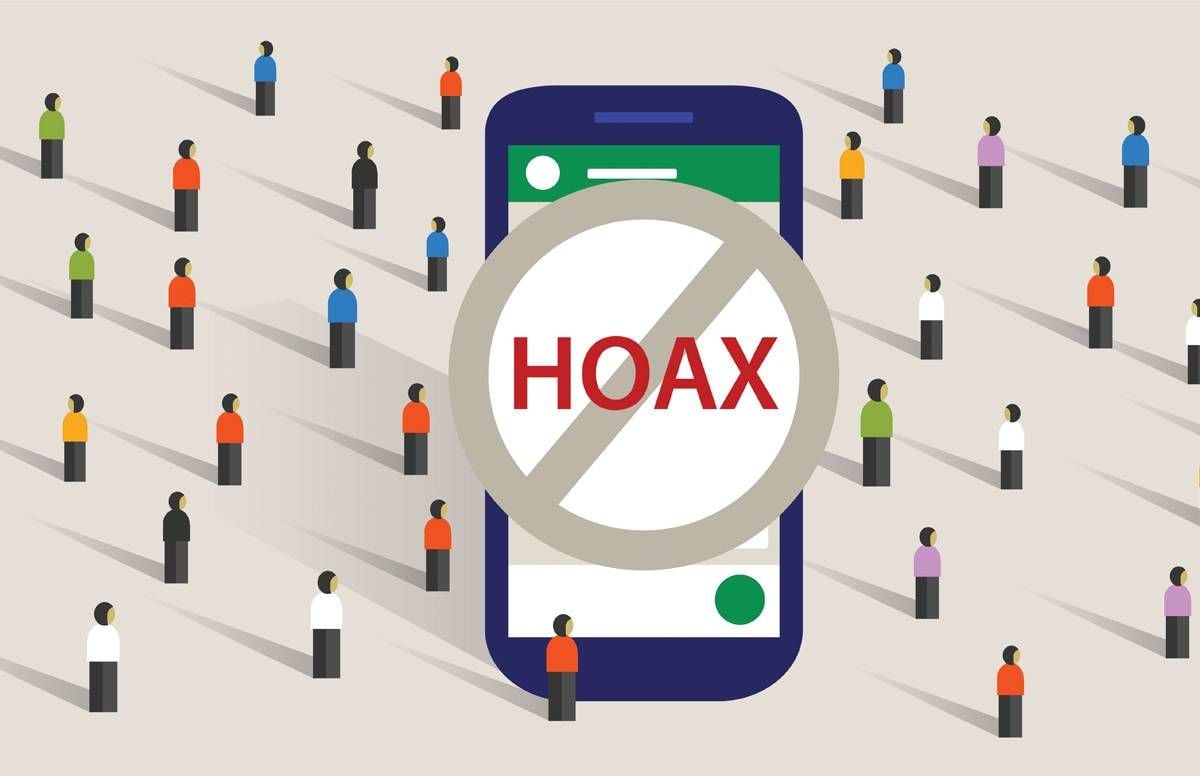Coronavirus in the News: Separating Fact From Fiction
Paying attention to reliable sources is the key to weeding out hoaxes
Since the beginning of the coronavirus pandemic in the U.S., the 24/7 news cycle has transformed into an even more rapidly changing landscape of information, and in some cases, misinformation.

Now more than ever, it’s important to have a discerning eye as we all attempt to process updates surrounding everything COVID-19 from statistics to social distancing, both on a national and a local level.
In a recent story in Stanford News, Jeff Hancock, a Stanford University communications professor in the School of Humanities and Sciences and founding director of the Stanford Social Media Lab, said there are telltale signs to determine whether coronavirus stories you're seeing are based in truth.
"It's important to check health-related information from established news sources rather than from shared stories in social media."
“Compared to real news, fake news tends to include information that is more surprising, upsetting or geared to trigger anger or anxiety. Any information that fits that (and a lot of coronavirus news can) should be double-checked. Other cues that raise suspicion include unknown sources, unusual numbers of endorsements (or likes) and memes that focus on partisan topics,” he said.
Our Commitment to Covering the Coronavirus
We are committed to reliable reporting on the risks of the coronavirus and steps you can take to benefit you, your loved ones and others in your community. Read Next Avenue's Coronavirus Coverage.
Coronavirus News: Hoax or No?
This week, Buzzfeed published what they called “a running list” of hoaxes being promulgated about coronavirus; it’s a list the editors plan to update regularly. You may be surprised to learn that the “sources” to which incorrect information is being attributed include reputable entities such as the United Nations and the Pentagon.
Other hoaxes featured in the Buzzfeed piece spotlight claims which, in calmer times, might not gain traction, but in this period of heightened anxiety, are attracting attention. There's a YouTube video encouraging people to inhale hot air from a hair dryer to cure coronavirus and another “home remedy” purported to kill the coronavirus — drinking excessive amounts of water to activate stomach acid — which offers what the article calls “very bad advice,” according to many medical experts.
Or this fallacy: no, in fact, there isn't any proof that taking ibuprofen can worsen coronavirus symptoms.
The Power of Mal-Information
Why do hoaxes like these surface in a time when it’s more important than ever for people to have confidence the information they are seeing is accurate and in their best interests?
According to Hancock, the reason is often deeply rooted in commerce and financial gain for those who definitely don’t have the best interests of anyone else in mind.
“Because media business models are based on attention economics, bad actors create mal-information (which includes fake news, misinformation and disinformation) about the coronavirus in order to get people to attend to their content, and ultimately make money from that attention. Money is the primary motivation,” he said.
But, Hancock added, there are other factors lurking behind the fake news.
"A second motivation is partisanship, and partisans try to lay blame for the crisis with political opponents. The third main motivation is seeking to disrupt and confuse the public. This was the Russian election interference motivation for mal-information and remains their objective along with some other hostile state actors,” he said.
Our Fragile Emotional State
In an article published on Next Avenue in April, 2019, called Who Shares Fake News? (We Know it Wasn’t You), contributor Andrew Lapin addressed the issue of which age group is generally more prone to believe, and share, fake news. As Lapin reported, there are many factors and not a definitive answer about the ages of those who spread fake news stories.
However, in this time of a pandemic, the role of our collective emotional state no matter our age is a contributing factor in susceptibility to fake news.
In his story, Lapin quoted Kate Starbird, an assistant professor in the department of human centered design and engineering at the University of Washington, who had been studying the power of social media (specifically Twitter) for the last ten years.
Lapin wrote: A common characteristic of the most successful fake news stories, Starbird said, is that they play on the reader’s emotions. “When you’re feeling really angry or really upset or really disgusted, that’s kind of a hint that someone’s trying to manipulate you,” she said.
The Importance of Reliable Sources
According to Hancock, it has become especially essential to trust where you are seeking the latest information.
"It’s important to check health-related information from established news sources rather than from shared stories in social media. A subscription to any reputable news organization is highly recommended, though many news sites (e.g., The New York Times) are offering free access to coronavirus related news," he said.
Another bit of caution: Just because the news is 24-hours a day on television and social media, that doesn't mean you have to engage with it consistently.
Stay informed, yes, but make time every day for life away from the screen. Pick up a book. Take a walk. Listen to music. Make room for some quiet so that when the noise of life gets to be too much, you will know just how to step back and not become overwhelmed. Or fooled.


